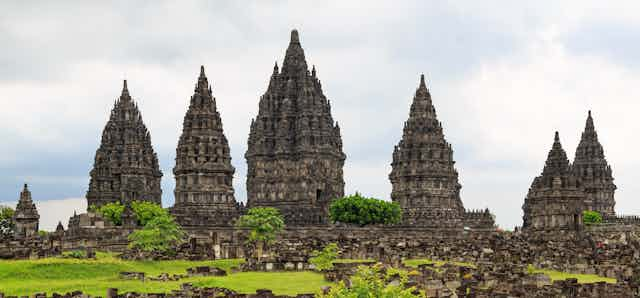The Anthropocene Epoch – a new geological era in which humans are the dominant force for change – is real and started sometime around 1950. This is the conclusion reached by the Anthropocene Working Group (of the International Commission on Stratigraphy) in August this year. The group will spend the next three years finding a suitable geological marker of this transition.
But many scholars disagree with this pronouncement, as it ignores thousands of years of human impact on Earth. To declare the start of human transformation of Earth in the 1950s fails to take into account the continuous nature of human-induced changes to our planet. Underlying such a claim is the view that only Earth’s most recent human populations possess the capacity to change Earth. Such thinking instils a Western, white-male, elite-technocratic narrative of human engagement with our environment that is counter to contemporary thinking in the social sciences.
For that reason, we teamed up with colleagues to challenge the Anthropocene Working Group’s view of the world. In a comment article, published in the journal Nature, we ask how this new “human” geological period can be defined without including the impact of societies, agriculture, urbanisation, colonisation, trading networks, and energy transitions from biomass to fossil fuels and renewables. We think the Anthropocene encompasses huge social, cultural and technological differences across time and space.
We know that human activities over the past 10,000 years have caused extinctions and changes in the distribution of plants, animals and microflora. For example, widespread land clearance has eroded soils and released greenhouse gases into the atmosphere. Humans have also created completely new materials such as ceramics, brick, concrete and many different types of pollutants. Big networks of canals, reservoirs and irrigation have also shaped the environment.
The rise of agriculture is one of the most fundamental human-made changes, which has had a massive effect on our planet. The fossil record of this transition is well documented in ancient deposits containing pollen, seeds, parasites and bones.

It’s not that the Anthropocene Working Group has completely ignored this – it has investigated anthropogenic signals such as pollution caused by the first production of metals during the Bronze Age (from 2000 BC) and Iron Age (from 1200 BC). But many within the group see the “great acceleration” after 1950 – a doubling of world population, a massive increase in environmental degradation and an acceleration of human-induced climate change – as more important.
The reason for this seems obvious. While the group does include members outside the natural sciences (such as a journalist, a lawyer and historians of science) only three of the 37 members are social scientists who actually research social change over time. This is a shame as understanding “human systems” requires engaging a vast body of work based on a diverse array of records from archaeology, history and palaeoenvironments.
Changing perspectives
But why is defining the Anthropocene so important? We believe it will have major philosophical implications. Embracing the Anthropocene reverses 500 years of scientific discoveries that have assigned humans a role of increasing insignificance – from the 16th century Copernican revolution removing the Earth from the centre of our universe to the Darwinian revolution establishing humans as a mere twig on the tree of life. The Anthropocene shows that humans are not merely passengers on planet Earth. Instead, Homo sapiens are central to the environmental and evolutionary future of Earth, the only place where life is known to exist.
Widespread recognition that human actions shape the living infrastructure of Earth challenges a number of views of both society and environment. The power that humans wield is unlike any other force of nature – it can be used, withdrawn or modified. That knowledge gives us great responsibility.
It is precisely for this reason that defining the Anthropocene must be done transparently with much wider input. The Anthropocene Working Group should publish, for open peer review, the criteria on which the Anthropocene Epoch will be defined, and also open its decision-making processes to review in the same way. It is time for the Anthropocene Working Group to move beyond its current status as a typical stratigraphic working group, formed of invited volunteers without a formal membership process or by-laws.
We instead call for a dedicated scientific institution, perhaps called the International Anthropocene Commission, to coordinate this. It could be set up and funded by the International Union of Geological Sciences, Future Earth and the United Nations. Half its members should be drawn from anthropology, archaeology, history, sociology, geography, paleoecology, economics and philosophy. It should have a formal, documented, procedure for membership, decision-making and reporting, and feedback on its workings.
Defining a human epoch is so important it should not be rushed. It should be treated by scholars from all disciplines with the seriousness it deserves.

